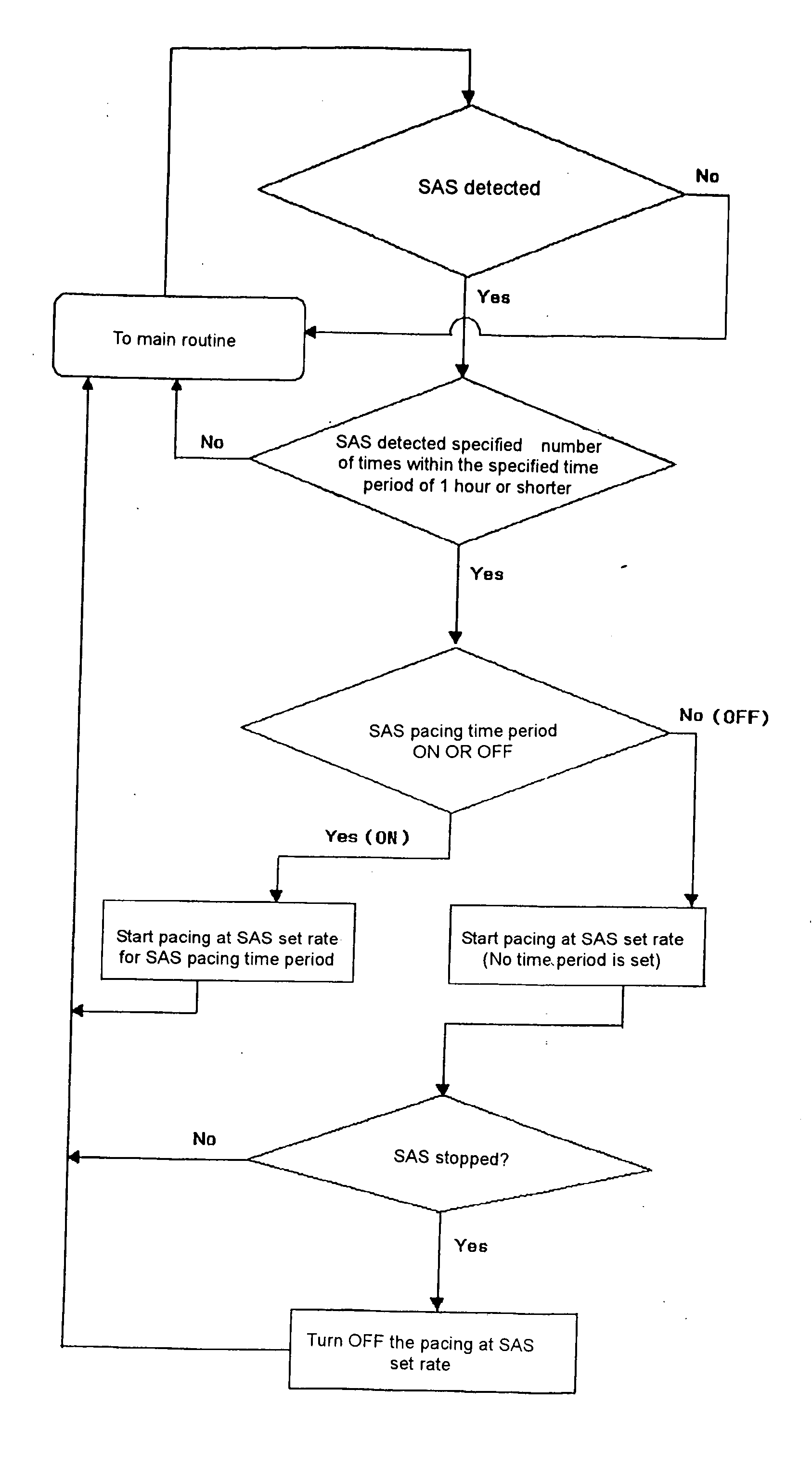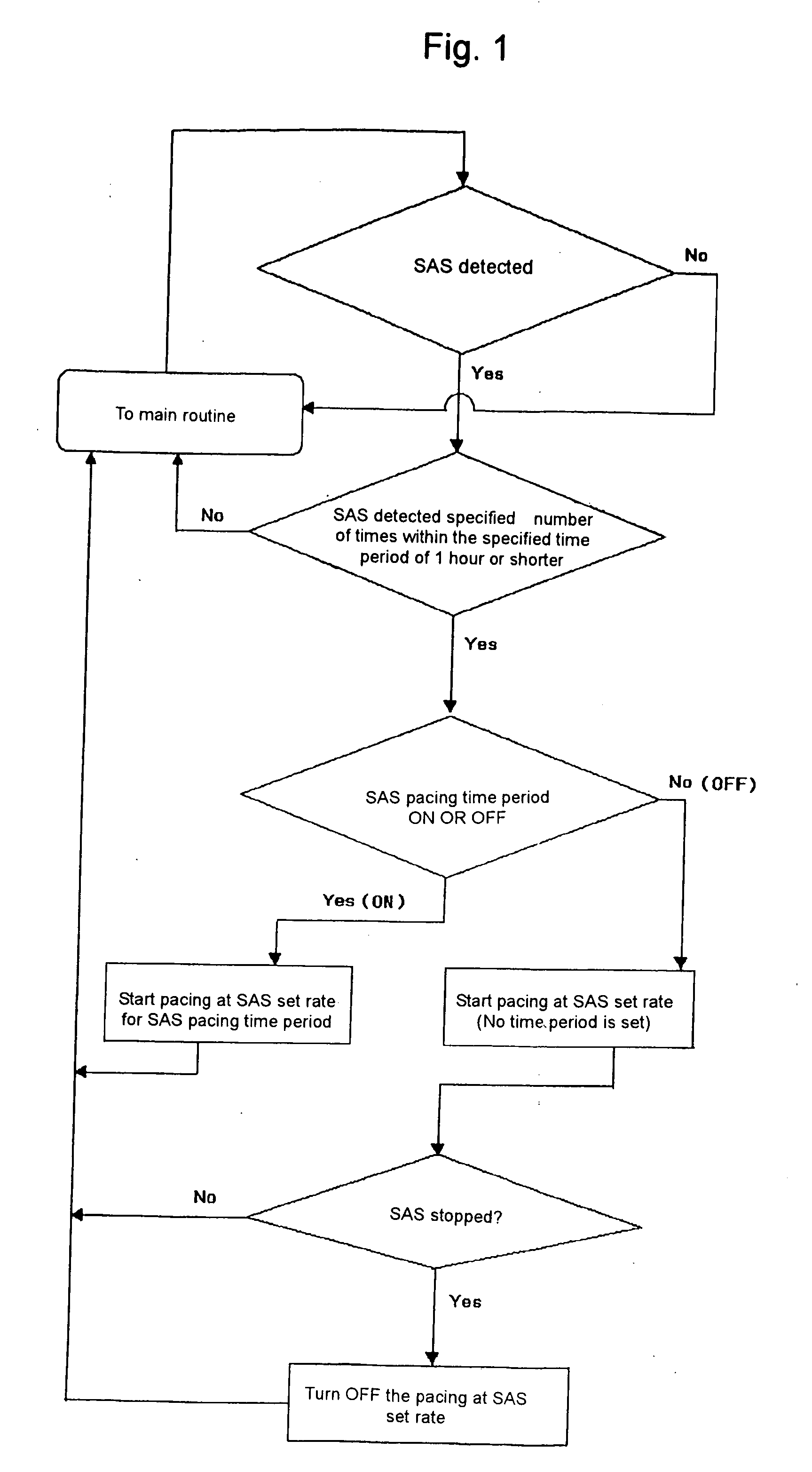Pacemaker system for treating sleep apnea syndrome
a pacemaker and sleep apnea technology, applied in the field of pacemaker systems, can solve the problems of adversely affecting the patient's sleep apnea, heart rate, brain blood flow drop, etc., and achieve the effect of improving the reliability of the detection of an apnea sta
- Summary
- Abstract
- Description
- Claims
- Application Information
AI Technical Summary
Benefits of technology
Problems solved by technology
Method used
Image
Examples
Embodiment Construction
[0027] The pacemaker system of this embodiment, which is configured as shown below, is adapted for models with various modes such as SSI(R), VDD(R), DDD(R), etc.
[0028] An electric circuit for measuring thorax impedance through a lead embedded in the body is contained in the main body of the pacemaker. The electric circuit for measuring thorax impedance, which is part of a MV sensor, provides apnea detection means. A storage circuit for storing a MV sensor histogram is contained in the main body of the pacemaker. Although the pacemaker of this embodiment is configured such that when the rest rate is turned on, the SAS feature is automatically turned on, the SAS feature can also be set to be ON or OFF independently regardless of whether the rest rate is set or not. Further, in the pacemaker system of this embodiment, as the reference values for shifting into a SAS pacing mode, reference values, for example, not less than 5 SAs per hour and not shorter than 10 seconds for one SA are p...
PUM
 Login to View More
Login to View More Abstract
Description
Claims
Application Information
 Login to View More
Login to View More - R&D
- Intellectual Property
- Life Sciences
- Materials
- Tech Scout
- Unparalleled Data Quality
- Higher Quality Content
- 60% Fewer Hallucinations
Browse by: Latest US Patents, China's latest patents, Technical Efficacy Thesaurus, Application Domain, Technology Topic, Popular Technical Reports.
© 2025 PatSnap. All rights reserved.Legal|Privacy policy|Modern Slavery Act Transparency Statement|Sitemap|About US| Contact US: help@patsnap.com



